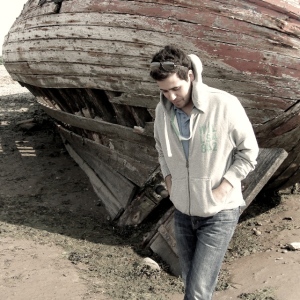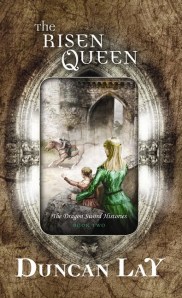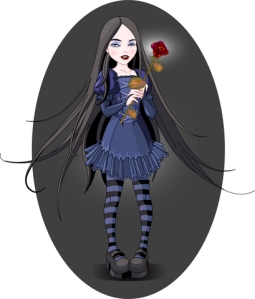July 11, 2012 · 9:07 am

Bruce with Apple Blossom (1977)
I have been featuring fantastic female fantasy authors (see disclaimer) but this has morphed into interesting people in the speculative fiction world. Today I’ve invited the hardworking and insightful Bruce Gillespie to drop by.
I first met Bruce in 1976, when I went to Melbourne with Paul Collins to start an Indie Press publishing house. Bruce was living in Carlton with his cat Flodnap (and his cat’s cat, Julius) and had been editing fanzines for 8 years. By 1976, Bruce had been nominated for a Hugo three times, so despite being only 29, he was already one of the Grand Old Men of Australian SF Fandom.
Q: Your work had received three Hugo Nominations before you were 30. You have received total of 45 Ditmar Nominations and 19 wins, and The A Bertram Chandler Award in 2007, plus you were fan guest of honour at AussieCon 3, the World SF Convention in 1999, is there anything left that you would like to achieve?
 A: Like any other fanzine editor or writer, I would actually like to win the Hugo Award for either Best Fanzine or Best Fan Writer! But that seems impossible these days, since even in 1999 and 2010, when the world convention was held in Australia, I could not gain enough votes to reach the nominations list.
A: Like any other fanzine editor or writer, I would actually like to win the Hugo Award for either Best Fanzine or Best Fan Writer! But that seems impossible these days, since even in 1999 and 2010, when the world convention was held in Australia, I could not gain enough votes to reach the nominations list.
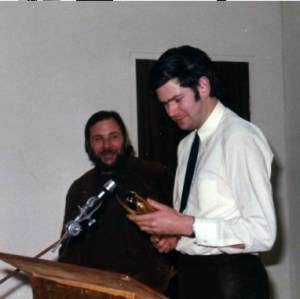
Bruce receives his first Ditmar from John Bangsund (1972)
However, in 2009 I was awarded the Best Fan Writer in the annual FAAN Awards, given by my peers, the fanzine writers and editors who attend the Corflu convention in America. I count that as a great honour, along with having received Australia’s two awards for lifetime achievement, the A. Bertram Chandler Award (as you mention) and the Peter MacNamara Award. In practical
terms, the greatest honour I’ve received was the Bring Bruce Bayside fan fund, which enabled me to return to America (for the Corflu and Potlatch conventions) for a month in 2005.

- The Gang (1967)
John Bangsund, Leigh Edmonds, Lee Harding, John Foyster, Tony Thomas, Merv Binns and Paul J Stevens
- The Gang (1967)
Q: In your 2012 snapshot interview you say: A fanzine is a minor artform, based on putting together a wide range of material from my favourite writers, plus response from letter writers from all over the world. The use of a computer limits the artform in some ways, but also offers design, editing and font possibilities that were impossible to access in the Good Old Days (pre 1990s) of using stencils and duplicators.’ You have been producing zines now since 1968, that’s 44 years. In that time you must have worked out what makes a good fanzine. If you could go back now to Bruce circa 1968, what advice would you give him?
 A: I could have warned him not to use the typewriter with which I produced the first SF Commentary in 1969. It was a little Olivetti with a beautiful typewriter face — but unfortunately it would not cut a stencil properly. For a fanzine that was almost illegible, SF Commentary No 1 gained an enormous response from people around the world, including a letter from Philip K. Dick, my favourite SF writer.
A: I could have warned him not to use the typewriter with which I produced the first SF Commentary in 1969. It was a little Olivetti with a beautiful typewriter face — but unfortunately it would not cut a stencil properly. For a fanzine that was almost illegible, SF Commentary No 1 gained an enormous response from people around the world, including a letter from Philip K. Dick, my favourite SF writer.
But apart from that, how can you give advice to a 22-year-old, especially someone with far more energy than I have now? ‘Follow your nose?’ ‘Never give up?’ I knew then that no matter how people responded to my fanzines, that was what I should be doing. Nothing’s changed.

Bruce with Brian Aldiss at Stone henge (1974)
Q: In the same interview you said: ‘Of course, I can publish electronically, using PDF files, on Bill Burns’ wonderful efanzines.com, but I know that many people download such magazines and don’t read them with the attention they would devote to a magazine they received through the mail.’ I do most of my reading on-line, following science blogs, political activists and researching. Personally, I don’t feel that I give less attention to my on-line reading. What leads you to believe that an on-line magazine is valued less than a print magazine?
A: For someone of my generation, a paper document has real existence, and online documents don’t. I don’t really believe that the current electronic publications will be available or readable in twenty years, let alone forty, but I still own almost all the paper fanzines I’ve received since 1969. If I value anything I find Out There, I copy it into a Word file and print it. More to the point, many of my correspondents say that they reply to paper fanzines, and don’t respond to fanzines posted on efanzines.com. That’s if they even take the trouble to download.
The current situation is that I can no longer afford to print and post my fanzines, so I will be asking almost all my readers to download them. This will sharply reduce the number of letters of comment I receive, but it gives me much more freedom to publish much more often.
Q: You once said about Fandom: ‘Before I joined fandom I had almost no friends or anybody with whom I could share my interests. In fandom I found people who were not just another part of the mundane world, which I find stifling. During a weekend I spent at Lee Harding’s place in late 1967, I met for the first time many of the people who have had the most influence on my life, such as John Bangsund, Lee Harding, George Turner, John Foyster and Rob Gerrand.’ (See Bruce’s post about science fiction and fandom here). I must admit that it wasn’t until I came to Melbourne with Paul in 1976 that I met people I could talk to. I’d come from Brisbane where all people talked about was football and getting drunk (obviously I was moving in the wrong circles). In Melbourne fandom I met fascinating people who could hold stimulating conversations on all manner of topics. I felt like I’d come ‘home’. Nowadays with the WWW people can make contact with other like-minded people, but forty years ago it was much harder. SF fans were considered extremely odd. Can you give readers a glimpse of what it was like to be a fan in those days?

Melbourne Fandom in 1954
Back row: Merv Binns, and Dick Jenssen
Front row: Bob McCubbin, Bert Chandler and Race Mathews
A: At school, I had only two friends who read science fiction at all. Nobody else I knew read SF, although the SF magazines were much more widely available (in newsagents) than now. At university, no other students seemed interested. However, I did read in the Bulletin in 1966 that Melbourne had just held an SF convention. Charles Higham wrote what remains the fairest report any Australian journalist has ever offered of an SF convention. He made it sound very exciting. I also knew that the Melbourne SF Club held its meetings every Wednesday night in Somerset Place, which was behind McGill’s Newsagency in Elizabeth Street. McGill’s had the only good stock of science fiction in Melbourne, and I realised that this had something to do with the tall thin man who loomed behind the counter (who was, of course, Mervyn Binns, who has just been given the Infinity Award for his services to fandom). Every science fiction book sold in McGill’s included a little leaflet advertising the club. Also, McGill’s sold a magazine called Australian Science Fiction Review (ASFR). The quality of the reviews and articles in this magazine were staggeringly far ahead of those in the pro SF magazines, for both intellectual content and sparkling style. However, I knew I would never finish my degree if I became involved in fandom from 1965 to 1967. At the end of 1967 I wrote several articles on the works of Philip K. Dick and sent them to John Bangsund, the editor of ASFR. He rang me in December 1967 and suggested I visit his home in Ferntree Gully to meet the people who produced the magazine. This was the beginning of my career in fandom, for I met people who read what I read, talked about what interested me, and who were interested in what I had already written.

Bruce with Allan Sandercock (1971)
Q: You are a qualified school teacher and did teach for two years, but gave it up to produce fanzines and write about speculative fiction. You said: ‘My mundane career has never gone anywhere much, and I’ve often been nearly broke. But my career in fandom (as an editor), which has never made me any money, has led to most of the good things in my life.’ What do you think are essential traits an editor needs?
A: That’s not quite right. I gave up teaching because I was hopeless at it. I was very close to suicide at the end of 1970, but a friend prompted me to do what I would have thought unthinkable — resign. When I did this, the Department wanted to keep teachers, so I was offered a series of bribes to stay officially a teacher. The last of these was a position in the Publications Branch of the Department. In 1971 and 1972 I received a full on-the-job training in professional editing and journalism. I left in mid 1973 to go overseas, visiting fans all over America for four months and a month in Britain. When I returned I decided to try freelance book editing. I knew there was no editing work in SF in Australia, but my friend John Bangsund was making an intermittent living from freelancing, and there was plenty of work, especially in textbooks, in 1974.
The essential quality of an editor is to love correcting other people’s writing. You trawl through a book and can see how you can improve it. Many editors (especially my wife Elaine) are much better at it (are much more meticulous) than I am, but I’ve kept on working over the years, sometimes successfully (as during the twelve years I received guaranteed freelance work from Macmillan in Melbourne) and sometimes disastrously (such as at the end of 1976, when I was actually forced to take a part-time office job for a year or so). Elaine and I have learned to skate along from cheque to cheque, and sometimes those cheques are very thin on the ground.

Bruce Gillespie and Elaine Cochrane on their Wedding Day (1979)
Q: In 1979 along with Carey Handfield and Rob Gerrand, you were one of the founding editors of Norstrilia Press, which published Greg Egan’s first novel, among others. Was there are particular philosophy that the three of you developed when you started Nostrilia Press?

Dick Jenssen and Rob Gerrand (2005)

Bruce Gillespie and Carey Handfield (1975)
A: Like the other small presses of the time, including Cory & Collins and Hyland House, our aim was to publish material that no major publisher would touch. You might remember that during 1973, for instance, there were 17 novels of any genre published by all Australian publishers. Even after the Australia Council began its publishing program under the Whitlam Labor Government, most of the spate of new titles sprang from the small press enterprises, such as Outback Press.
Carey said that the aim of Norstrilia Press (named in honour of American writer Cordwainer Smith, who had a great love of Australia, and whose only novel was Norstrilia) was to return enough money to SF Commentary, my magazine, to keep it going. This never happened, of course, but our first book (1975) was a set of essays called Philip K. Dick: Electric Shepherd. All the material, which included essays by Stanislaw Lem and George Turner, came from SF Commentary.

Carey devised a complicated system by which individual fans invested in particular books that we published. Since eventually we had to provide a return on investment, we diversified quickly. (Our only other critical book was The Stellar Gauge, essays by the finest critics in the field, edited by Michael Tolley and Kirpal Singh in 1981).
 Our second book was The Altered I, with stories and essays based on the Ursula Le Guin Writers Workshop of 1975 (held in association with Australia’s first world convention, Aussiecon 1).
Our second book was The Altered I, with stories and essays based on the Ursula Le Guin Writers Workshop of 1975 (held in association with Australia’s first world convention, Aussiecon 1).
We tracked down a novel by Keith Antill called Moon in the Ground. It had won a prize several years before, but had never found a publisher.
Greg Egan sent us his An Unusual Angle, a brilliant novel he had written when he was seventeen.
I had met Gerald Murnane at Publications Branch, and had typed several of his novels before he learned to type. In 1977 I suggested that one section of a giant novel would make a great book on its own. That became The Plains in 1982, which was our greatest success (gaining a nomination for The Age Book of the Year Award), and still Gerald’s best regarded book. Text Publishing has just produced yet another edition, and it has had several overseas editions.
We were also very pleased to publish George Turner’s literary memoir In the Heart or in the Head, as well as The View from the Edge, his book about the 1977 Writers Workshop held at Monash University.
However, all of Carey’s and Rob’s labours were unpaid, and I was paid only for the typesetting work that I did for Norstrilia Press, Cory & Collins and Hyland House. At the end of ten years, we had made very little money, and Carey wanted to get married and establish his own career. So Norstrilia Press finished in 1985.

John Foyster, Carey Handfield, Damien Broderick and John Bangsund (1982)
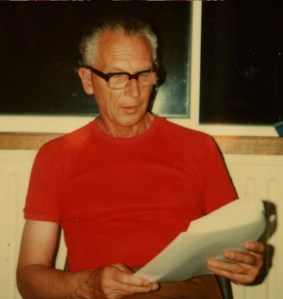
George Turner (1979)
Q: You are the executor for George Turner’s literary estate. What exactly does being a Literary Executor entail?
A: Not a lot, because George has not exactly been popular since his death in 1997. His main audience was overseas, and all those editions have gone out of print. Most of the work in keeping his name alive has been done by his agent, now my agent, Cherry Weiner, an Australian who has lived near New York for many years. At various times she has had great success with various Australian authors, such as Keith Taylor, Wynne Whiteford, David Lake, and now Paul Collins. She sold George’s posthumous novel Down There in Darkness, in 1998, but little since. I’ve signed contracts for Gollancz in Britain to republish The Sea and Summer (Drowning Towers in USA) as an SF Masterwork. I’m hoping that when it appears, it will re-establish George Turner as one of the major SF talents of the last fifty years.
I did publish 100,000 words of George Turner’s non-fiction as SF Commentary 76. Copies are still available, both as download and as a paper magazine.

Aussice Con 3 Timebinders Panel (1999)
Q: I was prompted to start this series of interviews because there seems to be a perception in the US and the UK that fantasy and particularly SF is a bit of a boy’s club. Do you think there’s a difference in the way males and females write?
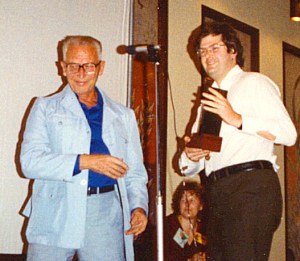
Bruce receives a Ditmar from George Turner (1980s)
A: Are we talking about science fiction or fantasy? To me they are quite different fields, with fantasy dealing with impossible events; and SF, at its best, being realistic novels that happen to be set in the future, rather than in the present or the past.
And are we talking about the writers or the readers? The balance in the composition of the readership changed very rapidly. When I became involved in SF fandom, the only women who turned up at conventions and club meetings were girlfriends or wives or members. That’s in 1968 and 1969. This began to change rapidly after 1971, mainly because of the influx of younger female media fans, but also a lot of women who were just beginning their careers as academics, teachers and librarians. By the 1973 Easter convention held in Melbourne, nearly half of the attendees were women, and that balance has remained even ever since.
But Australian writers, who were mainly male (Damien Broderick, Lee Harding, David Boutland, Jack Wodhams and Wynne Whiteford) tended to huddle in corners in the early 1970s because there were very few of them. There had been a very famous Australian female writer, Norma Hemming, but she had died in 1960 when she was very young. Cherry Wilder lived in Sydney for awhile, but she was a New Zealander with a German husband, so she went to live in Germany in the late 1970s.
The balance changed after fantasy became the dominant publishing genre in Australia in the 1990s. When HarperVoyager began consciously to recruit Australian writers, they found a treasure trove of young, enthusiastic women writers who have become very popular. Science fiction almost disappeared here, except from a few (male) writers such as Sean William, Sean McMullen and Terry Dowling. Marianne de Pierres and Lucy Sussex seem to be our only female writers who publish mainly science fiction.
All you have to do is look around at any fannish or professional gathering in Australia to see that 80 per cent or more of our writers are now female. They include many of my own favourite dark fantasy writers, such as Kaaron Warren, Cat Sparks and Deb Biancotti. I don’t read three-parter blockbuster medieval fantasy novels myself, but I acknowledge that Australia’s female writers (as well as a few males, such as Garth Nix) have conquered the field.
Q: Following on from that, does the gender of the writer change your expectations when you pick up their book?

Bruce receives the Chandler award from Paul Collins and Kirstyn McDermott (2011)
A: I’m only interested in finding good writing. I can’t help sympathising with Gerald Murnane’s rather provocative statement that no book should be published with the name of the author visible. In other words, the prose should speak for itself. Aesthetics über alles. However, like most readers I’m curious the find out about the authors whose works I enjoyed most, and I can’t help being flattered if my favourite writers remember something I might have written about their work. But I admit that most of my favourite SF writers have been male, for example, Philip Dick, Brian Aldiss, Thomas M. Disch, Cordwainer Smith, George Turner, Wilson Tucker, Stanislaw Lem and Christopher Priest. I always buy every new book by Ursula Le Guin. I love Joanna Russ’s work, but her novels were not as interesting as her short stories. I’ve enjoyed some of Gwyneth Jones’ books, but not all. In literary fantasy, nothing beats Le Guin’s Earthsea series and Diana Wynne Jones’s novels, but I also love fantasy by Peter Beagle, Italo Calvino, Steven Millhauser and a whole lot of others.
Q: And here’s the fun question. If you could book a trip on a time machine, where and when would you go, and why?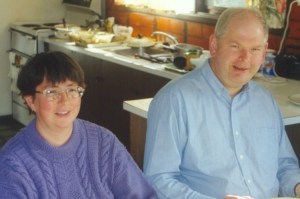
A: As the Strugatsky Brothers reminded us in their fun novel, Hard to Be a God, any of us would find any past era very smelly and very dangerous. Given the right inoculations (and nose filters), I would like to investigate the period that the Steampunkers have adopted as theirs, that very exciting era of huge change from 1880 to 1914. You would have to think that the First World War was staged to destroy that tremendous fizz of progressive thinking and scientific and artistic change that seemed likely to lead to a brave new world. How were they were to know in 1914 that millions would be killed, and that Stalin and Hitler would divide the world’s attention for the next thirty years?
For a list of Bruce’s publications and essays see here.
For Bruce’s listing on the e-fanzine site, with links to all his fanzines, see here.

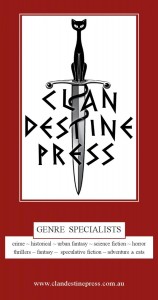
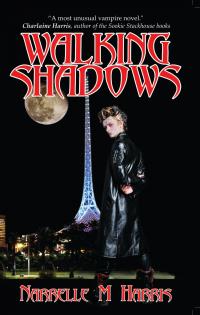
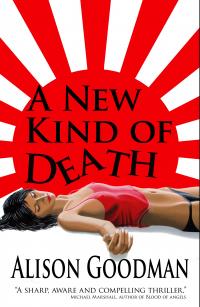
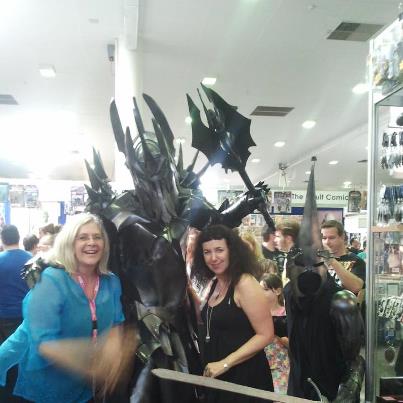

























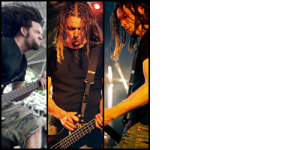
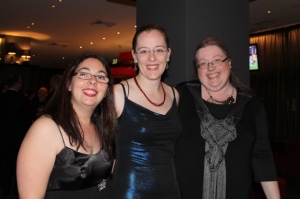
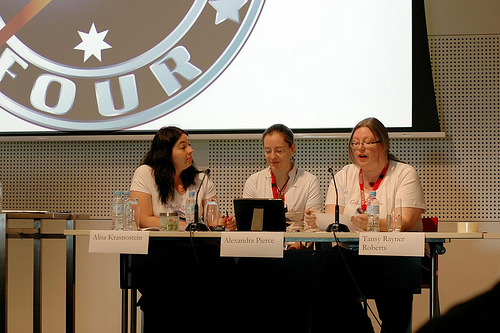

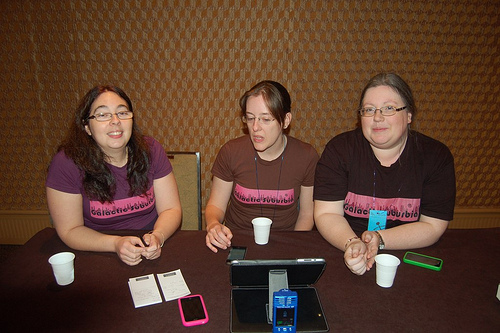














![Newton-CityOfRuinPBUK[3]](http://writersagainstobscurity.files.wordpress.com/2011/11/newton-cityofruinpbuk3.jpg)
